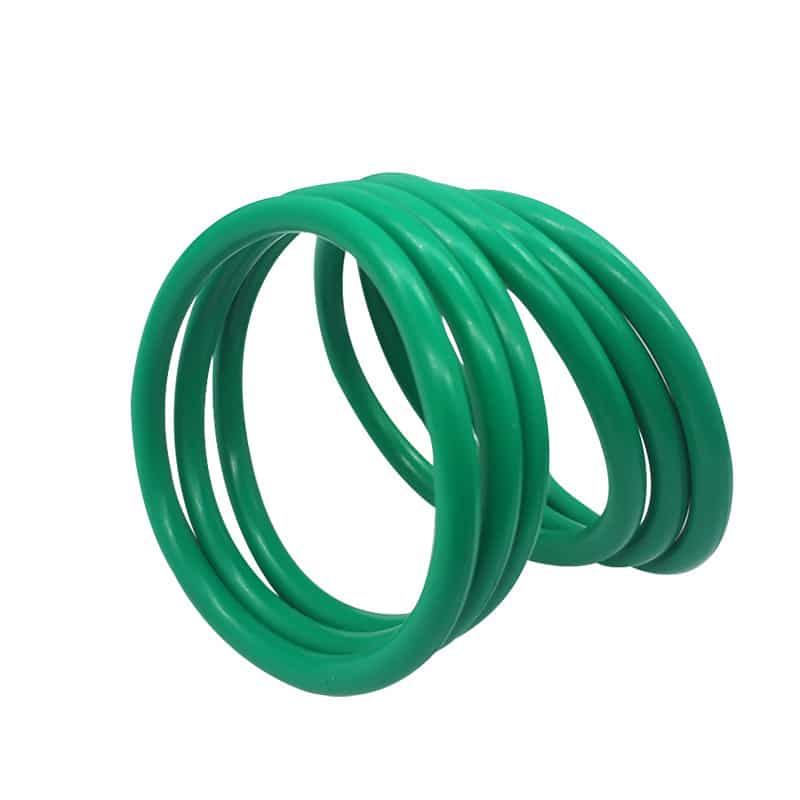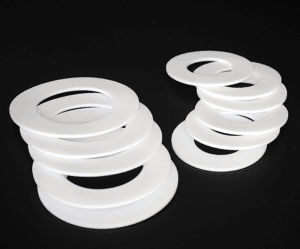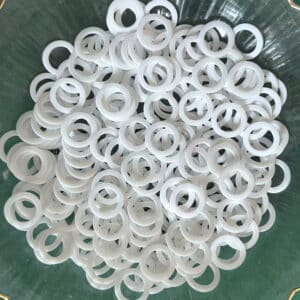Choosing the wrong O-ring material can cause leaks, system failures, and costly downtime. How do you decide between FKM and NBR O-rings for your specific needs?
FKM O-rings outperform NBR in heat, chemical, and fuel resistance, while NBR excels in cold flexibility and cost-efficiency.

Let me guide you through the key differences and help you make the best choice.
What is the difference between NBR and FKM O-rings?
Both NBR (Nitrile) and FKM (Fluorocarbon) are popular elastomers but serve different environments.
| Property | FKM O-Ring | NBR O-Ring |
|---|---|---|
| Oil Resistance | ⭐⭐⭐⭐⭐ Excellent | ⭐⭐⭐ Good |
| Fuel Resistance | ⭐⭐⭐⭐ High | ⭐⭐ Moderate |
| Chemical Resistance | ⭐⭐⭐⭐⭐ Superior | ⭐⭐ Limited |
Conclusion: Choose FKM O-rings for aggressive environments. Use NBR O-rings for simple oil sealing at lower costs.
Which O-ring is better for high temperature applications?
Temperature range is critical when selecting the right seal material.
| Feature | FKM O-Ring | NBR O-Ring |
|---|---|---|
| Temp Range | -20°C to 200°C | -40°C to 120°C |
| Heat Resistance | ⭐⭐⭐⭐ Excellent | ⭐⭐ Poor |
| Cold Flexibility | ⭐⭐ Moderate | ⭐⭐⭐⭐⭐ Excellent |
Tip: Above 120°C, always choose FKM O-rings. For cold applications, NBR is more flexible.
When should you use FKM O-rings instead of NBR?
Choosing the right material depends on your real-world application.
Use FKM O-rings for:
- Engines and fuel systems
- Chemical processing
- High-temperature hydraulics
Use NBR O-rings for:
- Pneumatic and hydraulic machinery
- Refrigeration systems
- Cost-sensitive OEM production
Need general-purpose sealing? Discover NBR O-rings for industrial use.
What common mistakes to avoid when choosing between FKM and NBR?
Avoid these costly errors:
- Mistake 1: Using NBR above 120°C → FKM is needed for high heat.
- Mistake 2: Choosing FKM for low-stress jobs → NBR saves money without sacrificing quality.
- Mistake 3: Ignoring chemical compatibility → Always verify resistance charts.
Explore our complete FKM selection guide for deeper insights.
Summary: Which O-ring material suits your application best?
| Criteria | FKM O-Ring | NBR O-Ring |
|---|---|---|
| Heat Resistance | ✅ Excellent | ❌ Poor |
| Oil Resistance | ✅ High | ✅ Moderate |
| Chemical Resistance | ✅ Strong | ❌ Weak |
| Cold Flexibility | ❌ Moderate | ✅ Excellent |
| Cost | ❌ Higher | ✅ Lower |
| Best For | Critical systems | General industry |
Conclusion
Choosing between FKM and NBR is about matching your application’s environment and budget for long-term success.
Get expert advice for your O-ring selection
📩 Email: [email protected]
📞 WhatsApp: +86 17622979498
Related post
- NBR O-Rings: Selection and Applications
- FKM Seals & O-Rings for High-Temperature Use
- How O-Rings Work: Complete Guide



